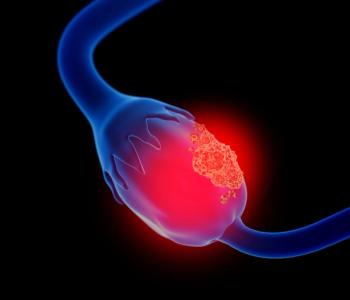
Possible Target Found in ARID1A-Mutated Ovarian Cancers
Researchers have discovered that ovarian cancers with ARID1A mutations may be sensitive to treatment with an inhibitor of EZH2 methyltransferase activity.
Researchers have discovered that ovarian cancers with ARID1A mutations may be sensitive to treatment with an inhibitor of EZH2 methyltransferase activity, according to the results of a study
“Our findings provide the foundation for new therapeutic strategies for ovarian clear cell carcinoma, a disease currently with limited therapeutic options,” study researcher Rugang Zhang, PhD, associate professor of the Wistar Institute, Philadelphia, told Cancer Network. “In addition, given ARID1A is mutated in many other cancer types, this strategy might apply to other cancer types as well.”
According to Zhang, ovarian clear cell carcinoma is a notoriously difficult cancer to treat because of the low initial response rate seen with current platinum-based chemotherapy. Recent cancer genomics analysis has revealed that ARID1A, an epigenetic regulator, is among the genes that show the highest mutation rates across many cancer types. Most notably, ARID1A is mutated in more than 50% of ovarian clear cell carcinoma. Unfortunately, a rational therapeutic approach that targets ARID1A mutation in human cancer has never been explored.
Therefore, Zhang and colleagues conducted this study to explore new therapeutic strategies for ARID1A-mutated ovarian clear cell carcinoma. They evaluated a panel of 15 commercially available small molecular inhibitors known to target epigenetic regulators and discovered that ARID1A-mutated ovarian clear cell carcinoma cells were selectively sensitive to a clinically applicable inhibitor of EZH2 methyltransferase activity or the so-called synthetic lethality.
Next, the researchers used a mouse model to determine if EZH2 inhibition caused regression of the ARID1A-mutated tumors. They randomly assigned mice into two groups, treating them with a control or the EZH2 inhibitor. They found that the EZH2 inhibitor caused regression of ARID1A-mutated ovarian clear cell tumors, with a significant decrease in the size of the orthotopically xenografted tumors compared with control mice. In contrast, the inhibitor did not cause tumor regression in ARID1A wild-type mice.
“Inhibiting EZH2 activity using reagents that are currently in clinical trials for hematopoietic malignancies may represent a novel therapeutic strategy for ARID1A-mutated ovarian clear cell carcinoma,” Zhang said. “In addition, ARID1A mutation status could be used as a biomarker to predict response to EZH2 inhibitors.”
Newsletter
Stay up to date on recent advances in the multidisciplinary approach to cancer.
















































































